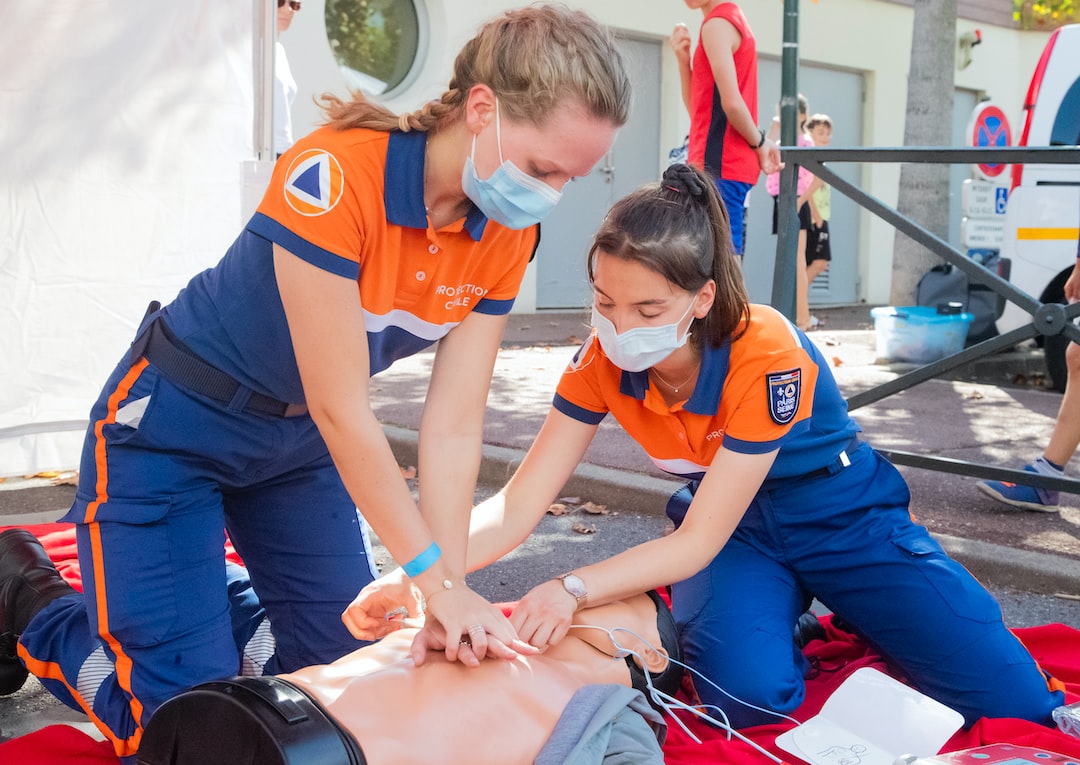 Everyone has the capacity to save a life when faced with the need. Knowing basic CPR techniques is a must for everyone.
Everyone has the capacity to save a life when faced with the need. Knowing basic CPR techniques is a must for everyone.
The American Heart Association says about 356,000 cases of cardiac arrest happen outside of a hospital each year. Learning CPR can be scary, but if you’re faced with the task, your ability to step up could save a life.
Keep reading to learn more about the basics of CPR so you’re prepared to act should you ever need to.
What is CPR?
Cardiopulmonary resuscitation, or CPR, is a lifesaving skill used on victims of cardiac arrest or those who have stopped breathing. CPR can help maintain oxygen and blood circulation until help arrives in an emergency. It is an important skill to understand and utilize if ever faced with a situation requiring it.
The basic steps of CPR include calling 911, checking for an open airway, providing two breaths, and chest compressions. After each set of chest compressions and breaths, it is important to check for a pulse, breathing, or a sign of life. CPR can help increase the chances of survival for anyone suffering from a cardiac emergency.
Getting CPR Certification Is Essential
Individuals with CPR certification are aware of how to respond in an emergency. They are aware of when CPR is necessary, how to perform it, and what to do until emergency services can arrive.
First aid certification is necessary since it enables the holder to save lives and be ready for any circumstance. Knowing CPR’s basic steps and pressures can be the difference between a successful resuscitation and a devastating outcome for the patient.
Please visit https://cprcertificationnow.com/products/pet-cpr-first-aid-certification to know more about CPR certifications on humans and animals.
Benefits of Knowing CPR Skills
Anyone who has been trained can do CPR, and knowing the basics is helpful in many situations. Checking to see if the person is responsive, calling for help, putting the person in the right position, and giving chest compressions are all steps that can help with resuscitation.
These benefits can be seen in situations where a medical professional or first responder is working. But not only doctors and nurses should be comfortable with CPR. Pediatricians, parents, and other non-medical people should also know the basics of how to give CPR. Learning CPR and knowing the basics could mean the difference between life and death in an emergency.
Step-by-Step Guide on How To Perform CPR
Understanding the basics of CPR is essential with a step-by-step CPR guide on how to perform CPR. In adult CPR, chest compression and rescue breathing are mandatory. It is important to remember that chest compressions should begin immediately, and should continue until help arrives or until the patient is breathing again.
The compressions should be at a rate of 100 to 120 per minute and be sure to press hard and deep enough to make the chest compress around 2 to 2.4 inches.
Rescue breathing is also essential in CPR and should occur after every 30 chest compression. Tilt the head back, pinch the nose shut, and give two breaths, each lasting about 1 second.
The Basics of CPR You Need to Know
Understanding the basics of CPR is an important step in becoming certified in life-saving skills. With the correct amount of training, you’ll be comfortable and confident in performing CPR in emergencies.
Take the time to review compression rates, positioning procedures, and techniques, and always follow a certified trainer for the best results. Join CPR classes and get certified today!
Are you looking for more tips and tricks on health and wellness? Check out the rest of our blog today!
Leave a Reply